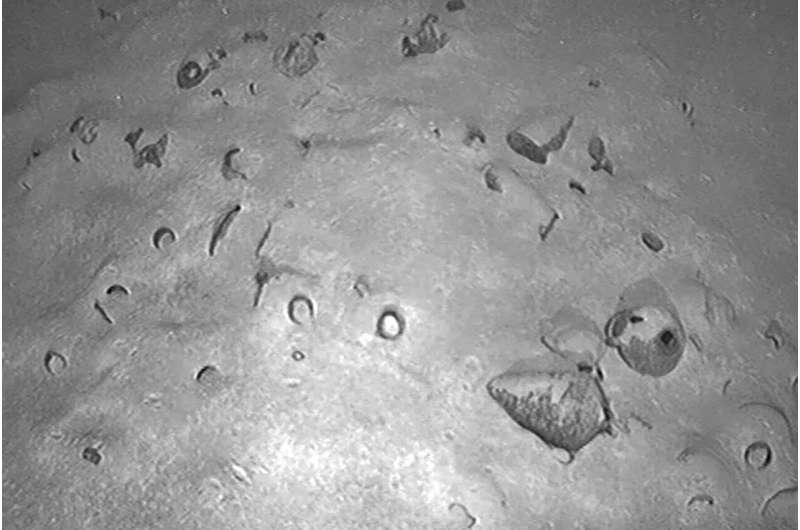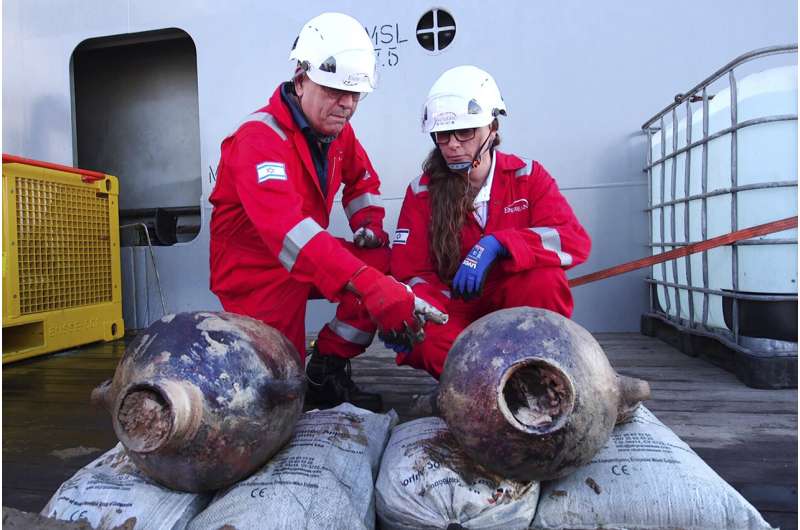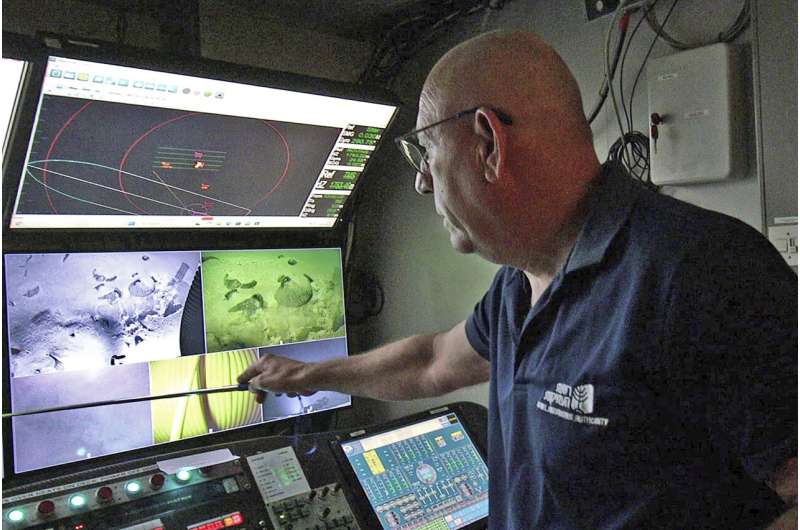This photo made from video released by Israel's Antiquities Authority (IAA) on Thursday, June 20, 2024 shows cargo that was carried on the world's oldest known deep-sea ship, as seen some 55.9 miles Credit: 90 kilometers off of the Israeli coastline. A company drilling for natural gas off the coast of northern Israel discovered a 3,300-year-old ship and its cargo, one of the oldest known examples of a ship sailing far from land, the Israel Antiquities Authority said on Thursday. (Energean/ Israel Antiques Authority via AP
A company drilling for natural gas off the coast of northern Israel discovered a 3,300-year-old ship and its cargo, one of the oldest known examples of a ship sailing far from land, the Israel Antiquities Authority said Thursday.
The discovery of the late Bronze Age ship so far out at sea indicates that the navigation abilities of ancient seafarers were more advanced than previously thought because they could travel without a line of sight to land, the IAA said.
The great depth at which the ship was found means it has been left undisturbed by waves, currents or fishermen over the millennia, offering greater potential for research, it said.
"The discovery of this boat now changes our entire understanding of ancient mariner abilities. It is the very first to be found at such a great distance with no line of sight to any landmass," said Jacob Sharvit, head of the IAA marine unit, adding that two similar ships from the same era had been discovered previously, but only close to shore.
Sharvit said the assumption by researchers until now has been that trade during that era was conducted by boats sailing close to the shore, keeping an eye on land while moving from port to port. He said the newly discovered boat's sailors probably used the sun and the stars to find their way.
-
This photo released by Israel's Antiques Authority (IAA) on Thursday, June 20, 2024 shows Jacob Sharvit, left, and Dr. Karnit Bahartan, right, with the ancient jars that were carried on the world's oldest known deep-sea ship, as seen some 55.9 miles Credit: 90 kilometers off of the Israeli coastline. A company drilling for natural gas off the coast of northern Israel discovered a 3,300-year-old ship and its cargo, one of the oldest known examples of a ship sailing far from land, the Israel Antiquities Authority said on Thursday. (Emil Aladjem/ Israel Antiquities Authority via AP
-
This photo made from video released by Israel's Antiquities Authority (IAA) on Thursday, June 20, 2024 shows a Canaanite jar being retrieved by a robot from a depth of 1.11 miles (1.8 kilometers) that was carried on the world's oldest known deep-sea ship, as seen some 55.9 miles Credit: 90 kilometers off of the Israeli coastline.. A company drilling for natural gas off the coast of northern Israel discovered a 3,300-year-old ship and its cargo, one of the oldest known examples of a ship sailing far from land, the Israel Antiquities Authority said on Thursday. (Energean/ Israel Antiquities Authority via AP
-
This photo released by Israel's Antiquities Authority (IAA) on Thursday, June 20, 2024 shows the control room of the Energean Star ship that mounted an operation to retrieve cargo that was carried on the world's oldest known deep-sea ship, as seen some 55.9 miles Credit: 90 kilometers off of the Israeli coastline. A company drilling for natural gas off the coast of northern Israel discovered a 3,300-year-old ship and its cargo, one of the oldest known examples of a ship sailing far from land, the Israel Antiquities Authority said on Thursday. (Emil Aladjem/ Israel Antiquities Authority via AP
The wooden ship sank about 90 kilometers (55 miles) off Israel's Mediterranean coast and was discovered at a depth of 1,800 meters (1.1 miles) by Energean, a natural gas company which operates a number of deep-sea natural gas fields in Israel's territorial waters.
In its work, Energean said it uses a submersible robot to scour the sea floor. About a year ago, it came across the 12 to 14 meter (39 to 45 foot) -long ship buried under the muddy bottom, nestled under hundreds of jugs that were thousands of years old.
The boat and its cargo were fully intact, the IAA said, adding that the vessel appeared to have sunk either in a storm or after coming under attack by pirates.
The ship for now is not being retrieved.
Energean worked with the IAA to retrieve two of the jugs, which were likely used for carrying oil, wine or fruit, and bring them to the surface for research.
The IAA identified the jugs as Canaanite, a people who resided in the lands abutting the eastern Mediterranean.
© 2024 The Associated Press. All rights reserved. This material may not be published, broadcast, rewritten or redistributed without permission.


























